Siddhartha Jain
Scaling Test-Time Compute to Achieve IOI Gold Medal with Open-Weight Models
Oct 16, 2025

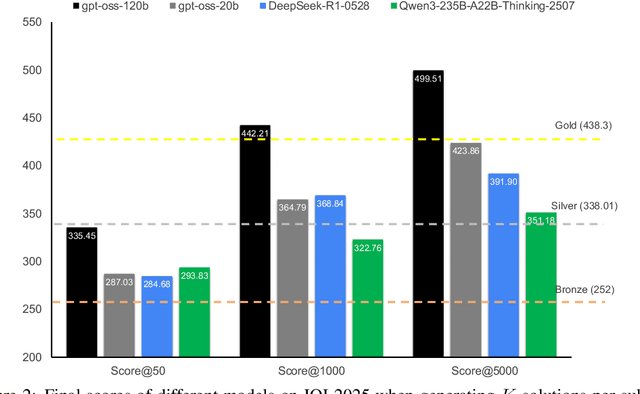

Abstract:Competitive programming has become a rigorous benchmark for evaluating the reasoning and problem-solving capabilities of large language models (LLMs). The International Olympiad in Informatics (IOI) stands out as one of the most prestigious annual competitions in competitive programming and has become a key benchmark for comparing human and AI-level programming ability. While several proprietary models have been claimed to achieve gold medal-level performance at the IOI, often with undisclosed methods, achieving comparable results with open-weight models remains a significant challenge. In this paper, we present \gencluster, a scalable and reproducible test-time compute framework that attains IOI gold-level performance using open-weight models. It combines large-scale generation, behavioral clustering, ranking, and a round-robin submission strategy to efficiently explore diverse solution spaces under limited validation budgets. Our experiments show that the performance of our proposed approach scales consistently with available compute, narrowing the gap between open and closed systems. Notably, we will show that GenCluster can achieve a gold medal at IOI 2025 for the first time with an open-weight model gpt-oss-120b, setting a new benchmark for transparent and reproducible evaluation of reasoning in LLMs.
NVIDIA Nemotron Nano 2: An Accurate and Efficient Hybrid Mamba-Transformer Reasoning Model
Aug 21, 2025



Abstract:We introduce Nemotron-Nano-9B-v2, a hybrid Mamba-Transformer language model designed to increase throughput for reasoning workloads while achieving state-of-the-art accuracy compared to similarly-sized models. Nemotron-Nano-9B-v2 builds on the Nemotron-H architecture, in which the majority of the self-attention layers in the common Transformer architecture are replaced with Mamba-2 layers, to achieve improved inference speed when generating the long thinking traces needed for reasoning. We create Nemotron-Nano-9B-v2 by first pre-training a 12-billion-parameter model (Nemotron-Nano-12B-v2-Base) on 20 trillion tokens using an FP8 training recipe. After aligning Nemotron-Nano-12B-v2-Base, we employ the Minitron strategy to compress and distill the model with the goal of enabling inference on up to 128k tokens on a single NVIDIA A10G GPU (22GiB of memory, bfloat16 precision). Compared to existing similarly-sized models (e.g., Qwen3-8B), we show that Nemotron-Nano-9B-v2 achieves on-par or better accuracy on reasoning benchmarks while achieving up to 6x higher inference throughput in reasoning settings like 8k input and 16k output tokens. We are releasing Nemotron-Nano-9B-v2, Nemotron-Nano12B-v2-Base, and Nemotron-Nano-9B-v2-Base checkpoints along with the majority of our pre- and post-training datasets on Hugging Face.
Llama-Nemotron: Efficient Reasoning Models
May 02, 2025Abstract:We introduce the Llama-Nemotron series of models, an open family of heterogeneous reasoning models that deliver exceptional reasoning capabilities, inference efficiency, and an open license for enterprise use. The family comes in three sizes -- Nano (8B), Super (49B), and Ultra (253B) -- and performs competitively with state-of-the-art reasoning models such as DeepSeek-R1 while offering superior inference throughput and memory efficiency. In this report, we discuss the training procedure for these models, which entails using neural architecture search from Llama 3 models for accelerated inference, knowledge distillation, and continued pretraining, followed by a reasoning-focused post-training stage consisting of two main parts: supervised fine-tuning and large scale reinforcement learning. Llama-Nemotron models are the first open-source models to support a dynamic reasoning toggle, allowing users to switch between standard chat and reasoning modes during inference. To further support open research and facilitate model development, we provide the following resources: 1. We release the Llama-Nemotron reasoning models -- LN-Nano, LN-Super, and LN-Ultra -- under the commercially permissive NVIDIA Open Model License Agreement. 2. We release the complete post-training dataset: Llama-Nemotron-Post-Training-Dataset. 3. We also release our training codebases: NeMo, NeMo-Aligner, and Megatron-LM.
Nemotron-H: A Family of Accurate and Efficient Hybrid Mamba-Transformer Models
Apr 10, 2025

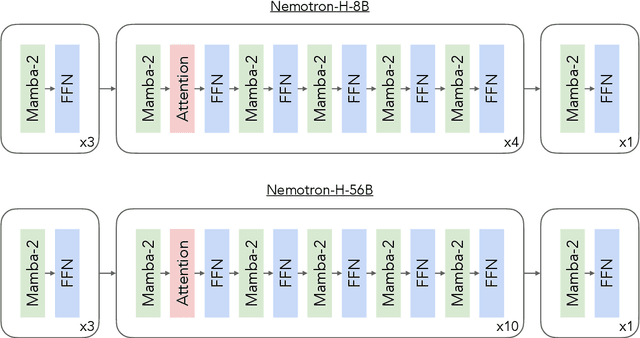
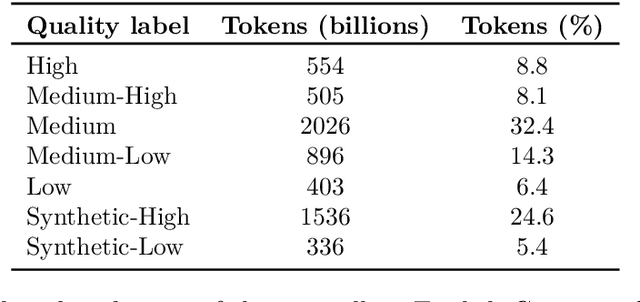
Abstract:As inference-time scaling becomes critical for enhanced reasoning capabilities, it is increasingly becoming important to build models that are efficient to infer. We introduce Nemotron-H, a family of 8B and 56B/47B hybrid Mamba-Transformer models designed to reduce inference cost for a given accuracy level. To achieve this goal, we replace the majority of self-attention layers in the common Transformer model architecture with Mamba layers that perform constant computation and require constant memory per generated token. We show that Nemotron-H models offer either better or on-par accuracy compared to other similarly-sized state-of-the-art open-sourced Transformer models (e.g., Qwen-2.5-7B/72B and Llama-3.1-8B/70B), while being up to 3$\times$ faster at inference. To further increase inference speed and reduce the memory required at inference time, we created Nemotron-H-47B-Base from the 56B model using a new compression via pruning and distillation technique called MiniPuzzle. Nemotron-H-47B-Base achieves similar accuracy to the 56B model, but is 20% faster to infer. In addition, we introduce an FP8-based training recipe and show that it can achieve on par results with BF16-based training. This recipe is used to train the 56B model. All Nemotron-H models will be released, with support in Hugging Face, NeMo, and Megatron-LM.
OpenCodeReasoning: Advancing Data Distillation for Competitive Coding
Apr 02, 2025Abstract:Since the advent of reasoning-based large language models, many have found great success from distilling reasoning capabilities into student models. Such techniques have significantly bridged the gap between reasoning and standard LLMs on coding tasks. Despite this, much of the progress on distilling reasoning models remains locked behind proprietary datasets or lacks details on data curation, filtering and subsequent training. To address this, we construct a superior supervised fine-tuning (SFT) dataset that we use to achieve state-of-the-art coding capability results in models of various sizes. Our distilled models use only SFT to achieve 61.8% on LiveCodeBench and 24.6% on CodeContests, surpassing alternatives trained with reinforcement learning. We then perform analysis on the data sources used to construct our dataset, the impact of code execution filtering, and the importance of instruction/solution diversity. We observe that execution filtering negatively affected benchmark accuracy, leading us to prioritize instruction diversity over solution correctness. Finally, we also analyze the token efficiency and reasoning patterns utilized by these models. We will open-source these datasets and distilled models to the community.
LiveBench: A Challenging, Contamination-Free LLM Benchmark
Jun 27, 2024



Abstract:Test set contamination, wherein test data from a benchmark ends up in a newer model's training set, is a well-documented obstacle for fair LLM evaluation and can quickly render benchmarks obsolete. To mitigate this, many recent benchmarks crowdsource new prompts and evaluations from human or LLM judges; however, these can introduce significant biases, and break down when scoring hard questions. In this work, we introduce a new benchmark for LLMs designed to be immune to both test set contamination and the pitfalls of LLM judging and human crowdsourcing. We release LiveBench, the first benchmark that (1) contains frequently-updated questions from recent information sources, (2) scores answers automatically according to objective ground-truth values, and (3) contains a wide variety of challenging tasks, spanning math, coding, reasoning, language, instruction following, and data analysis. To achieve this, LiveBench contains questions that are based on recently-released math competitions, arXiv papers, news articles, and datasets, and it contains harder, contamination-free versions of tasks from previous benchmarks such as Big-Bench Hard, AMPS, and IFEval. We evaluate many prominent closed-source models, as well as dozens of open-source models ranging from 0.5B to 110B in size. LiveBench is difficult, with top models achieving below 65% accuracy. We release all questions, code, and model answers. Questions will be added and updated on a monthly basis, and we will release new tasks and harder versions of tasks over time so that LiveBench can distinguish between the capabilities of LLMs as they improve in the future. We welcome community engagement and collaboration for expanding the benchmark tasks and models.
Reasoning in Token Economies: Budget-Aware Evaluation of LLM Reasoning Strategies
Jun 11, 2024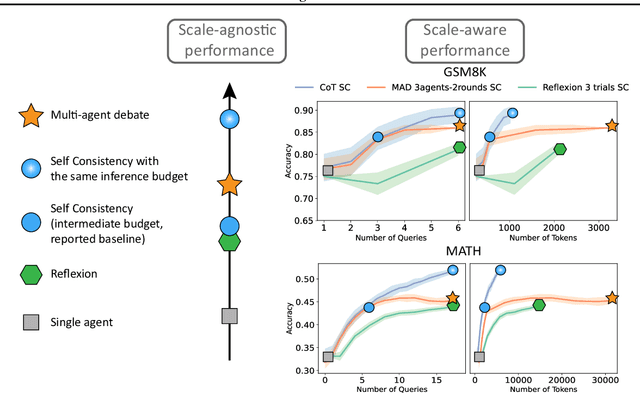
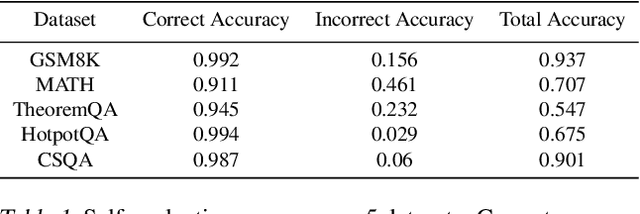
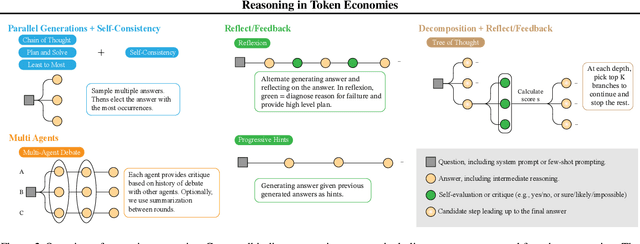

Abstract:A diverse array of reasoning strategies has been proposed to elicit the capabilities of large language models. However, in this paper, we point out that traditional evaluations which focus solely on performance metrics miss a key factor: the increased effectiveness due to additional compute. By overlooking this aspect, a skewed view of strategy efficiency is often presented. This paper introduces a framework that incorporates the compute budget into the evaluation, providing a more informative comparison that takes into account both performance metrics and computational cost. In this budget-aware perspective, we find that complex reasoning strategies often don't surpass simpler baselines purely due to algorithmic ingenuity, but rather due to the larger computational resources allocated. When we provide a simple baseline like chain-of-thought self-consistency with comparable compute resources, it frequently outperforms reasoning strategies proposed in the literature. In this scale-aware perspective, we find that unlike self-consistency, certain strategies such as multi-agent debate or Reflexion can become worse if more compute budget is utilized.
Code-Aware Prompting: A study of Coverage Guided Test Generation in Regression Setting using LLM
Jan 31, 2024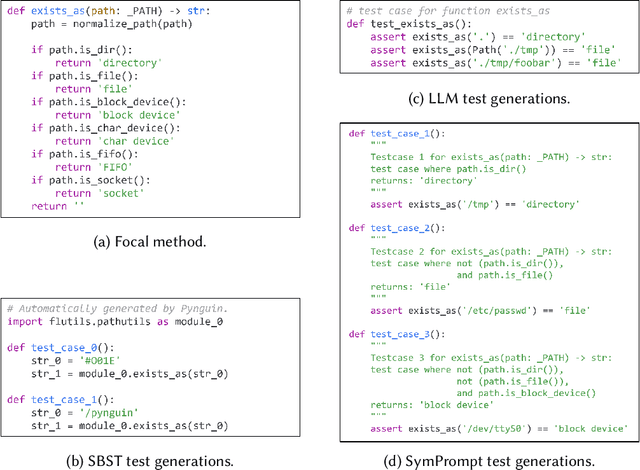

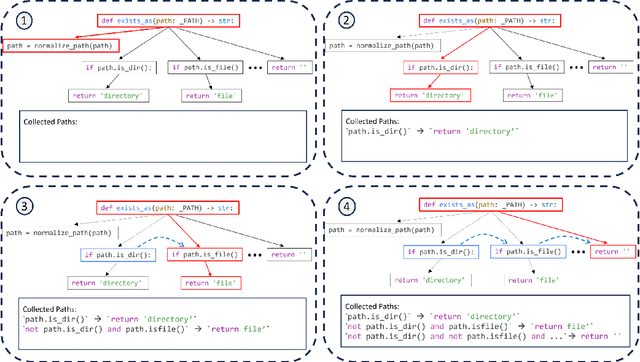

Abstract:Testing plays a pivotal role in ensuring software quality, yet conventional Search Based Software Testing (SBST) methods often struggle with complex software units, achieving suboptimal test coverage. Recent work using large language models (LLMs) for test generation have focused on improving generation quality through optimizing the test generation context and correcting errors in model outputs, but use fixed prompting strategies that prompt the model to generate tests without additional guidance. As a result LLM-generated test suites still suffer from low coverage. In this paper, we present SymPrompt, a code-aware prompting strategy for LLMs in test generation. SymPrompt's approach is based on recent work that demonstrates LLMs can solve more complex logical problems when prompted to reason about the problem in a multi-step fashion. We apply this methodology to test generation by deconstructing the testsuite generation process into a multi-stage sequence, each of which is driven by a specific prompt aligned with the execution paths of the method under test, and exposing relevant type and dependency focal context to the model. Our approach enables pretrained LLMs to generate more complete test cases without any additional training. We implement SymPrompt using the TreeSitter parsing framework and evaluate on a benchmark challenging methods from open source Python projects. SymPrompt enhances correct test generations by a factor of 5 and bolsters relative coverage by 26% for CodeGen2. Notably, when applied to GPT-4, symbolic path prompts improve coverage by over 2x compared to baseline prompting strategies.
Self-consistency for open-ended generations
Jul 11, 2023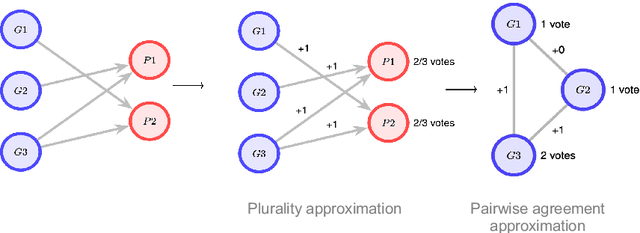
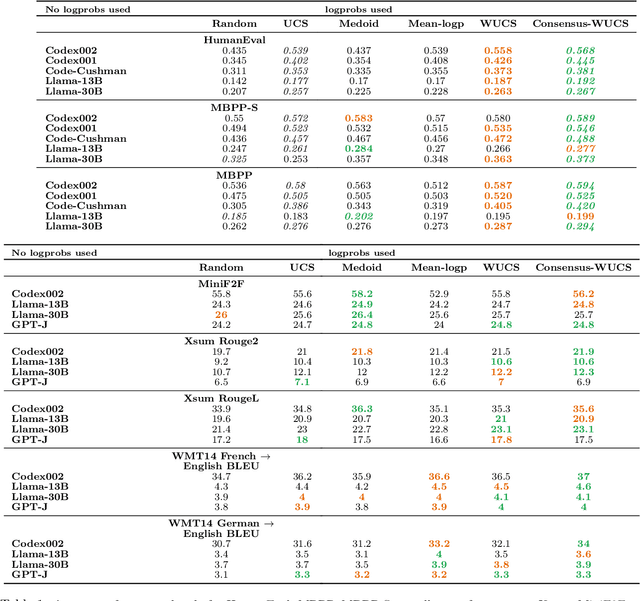
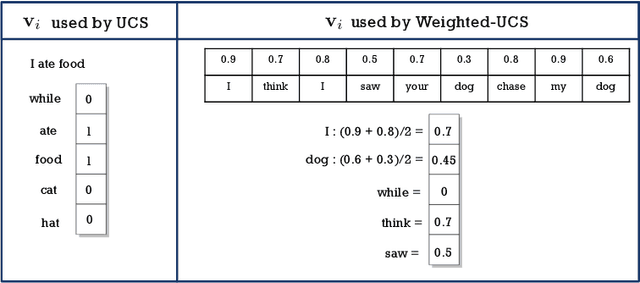
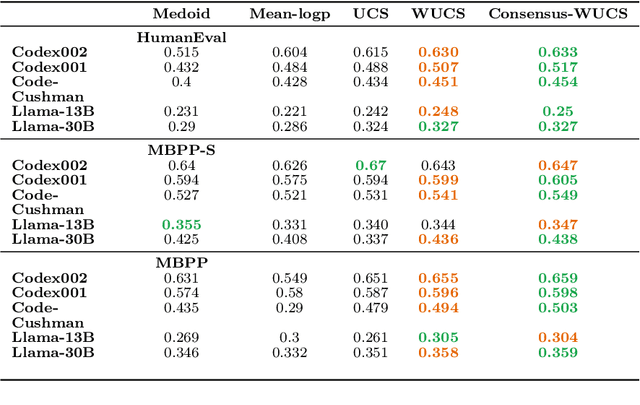
Abstract:In this paper, we present a novel approach for improving the quality and consistency of generated outputs from large-scale pre-trained language models (LLMs). Self-consistency has emerged as an effective approach for prompts with fixed answers, selecting the answer with the highest number of votes. In this paper, we introduce a generalized framework for self-consistency that extends its applicability beyond problems that have fixed-answer answers. Through extensive simulations, we demonstrate that our approach consistently recovers the optimal or near-optimal generation from a set of candidates. We also propose lightweight parameter-free similarity functions that show significant and consistent improvements across code generation, autoformalization, and summarization tasks, even without access to token log probabilities. Our method incurs minimal computational overhead, requiring no auxiliary reranker models or modifications to the existing model.
Multi-lingual Evaluation of Code Generation Models
Oct 26, 2022

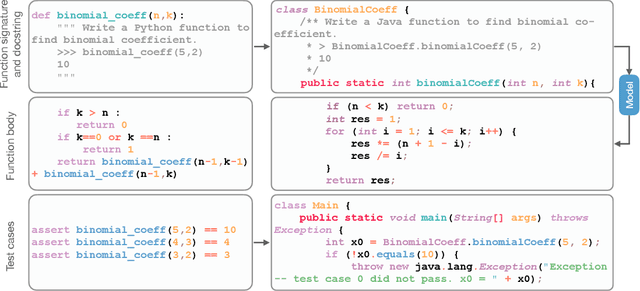

Abstract:We present MBXP, an execution-based code completion benchmark in 10+ programming languages. This collection of datasets is generated by our conversion framework that translates prompts and test cases from the original MBPP dataset to the corresponding data in a target language. Based on this benchmark, we are able to evaluate code generation models in a multi-lingual fashion, and in particular discover generalization ability of language models on out-of-domain languages, advantages of large multi-lingual models over mono-lingual, benefits of few-shot prompting, and zero-shot translation abilities. In addition, we use our code generation model to perform large-scale bootstrapping to obtain synthetic canonical solutions in several languages. These solutions can be used for other code-related evaluations such as insertion-based, summarization, or code translation tasks where we demonstrate results and release as part of our benchmark.
 Add to Chrome
Add to Chrome Add to Firefox
Add to Firefox Add to Edge
Add to Edge